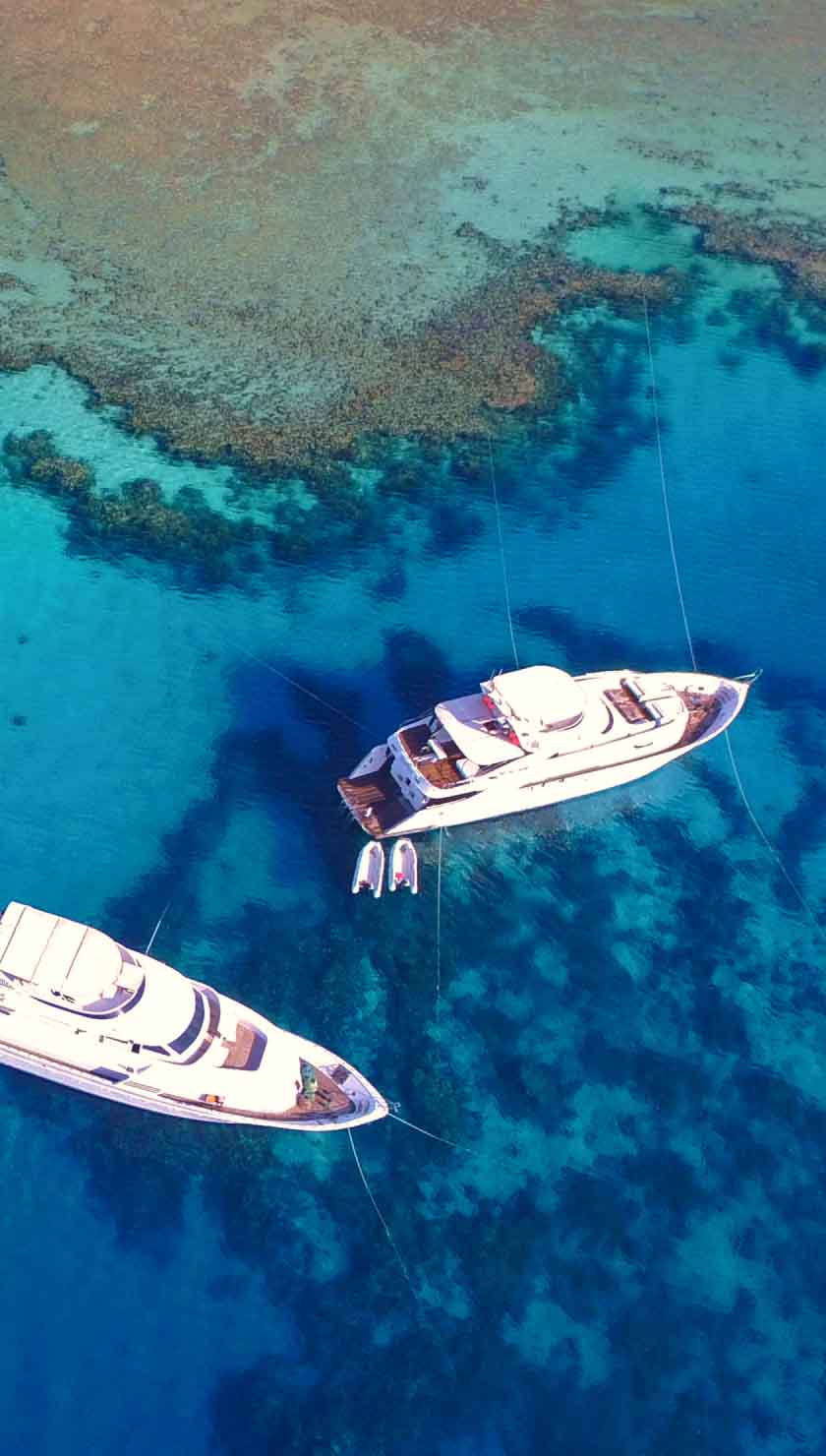Liveaboard Diving in Puerto Princesa
What to expect on a Puerto Princesa Liveaboard
Liveaboards to Puerto Princesa are the gateway to the coral gardens of the famous Palawan island, whose ecotourism programs are the most developed in the Philippines. It is also the port of departure for almost all Puerto Princesa liveaboards visiting the UNESCO World Heritage Site of Tubbataha Reefs National Park and other Sulu Sea dive destinations. Liveaboards to Puerto Princesa, head out from the city port into the middle of the Sulu Sea to explore this amazing and diverse area.
Puerto Princesa Underwater
Around and near Puerto Princesa, the coastline is blessed with an abundance of white-sand islets and tiny sandbars. Underwater, these tiny islands are ringed with seagrass and shallow coral reefs, sloping down to deeper dive sites in some places. Divers on a Puerto Princesa liveaboard can find areas with 100 percent cover of healthy foliose, branching, and table corals blooming in competition for space and light. Fish life thrives in these healthy reefs, so expect to see many small and large colorful reef inhabitants.
Dive Sites Of Puerto Princesa
Honda Bay, fronting the city of Puerto Princesa in the middle of eastern Palawan, is full of picture-perfect islands and powdery sandbars, some of which disappear at high tide. More than ten dive sites here offer healthy hard coral, reef sharks, and abundant fish life.
On the western side of Palawan, Port Barton, and Taytay, sandwiched between the east and west coasts, host tens of tiny islands and diverse marine environments. In many of Port Barton's reefs, hard coral cover reaches 100 percent, and sightings of schools of bump-head parrotfish have been reported. On the eastern side of Palawan, Taytay Bay's attractions include pristine coral and abundant reef fish at Apulit Island and Dinot Rocks, among other dive sites. Also part of Taytay but on the western side of Palawan, the rare Irrawaddy dolphin lives in the mangrove-lined Malampaya Sound, a protected seascape of regional importance for both local fishing and biodiversity conservation.
El Nido is known worldwide for its Bacuit archipelago, a maze of limestone cliffs jutting from the shallow seafloor, best explored by kayak or local outrigger boat (bangka). About a forty-minute journey from the mainland, this archipelago offers white-sand beaches, hidden lagoons to which you can only swim, shallow coral reefs (some less than one meter deep) with 100 percent live coral cover, and top-notch diving. Miniloc and Matinloc islands, farther from El Nido town, add to the variety of local dive sites on a Puerto Princesa liveaboard.
The Sulu Sea fronting the eastern coast of Palawan remains Puerto Princesa's (and the Philippines') top diving destination. This area is exclusively accessible to liveaboards. In the center of it lies Tubbataha Reefs National Park, two atolls and associated reefs that constitute the crown jewel of Philippines biodiversity preservation and have been rightly recognized as a UNESCO World Heritage Site since 1993. If you want to witness all levels of reef life, from huge pelagics to tiny nudibranchs, situated amongst breathtaking Coral Triangle species diversity, Tubbataha is the place to go. Cagayan and Calusa islands are also included on some Sulu Sea itineraries.
Top Tips For Divers
It's fairly easy to navigate the Philippines if you can speak English; Filipinos in tourism will speak English especially fluently. In Palawan, multiple local dialects are used by residents, but Tagalog is the unifying language. The local currency is the Philippine peso.
Gear to bring includes your mask, booties, fins, and dive computer. These are personalized pieces of equipment that we don't recommend renting. An ill-fitting mask or pair of fins can make diving virtually impossible, and a dive computer is your most important safety equipment; you'll want to ensure it is always well-treated and used only to keep track of your residual nitrogen time. On the other hand, BCDs and regulators are easy and safer to rent.
Getting To Puerto Princesa
Philippines' liveaboards operating from Puerto Princesa can be accessed by regular flights from Manila and Cebu City on Philippine Airlines, Air Asia, and Cebu Pacific. To get to Manila or Cebu City, direct flights are available from many Southeast Asian countries. International flights will usually transfer once before flying into the Philippines.











